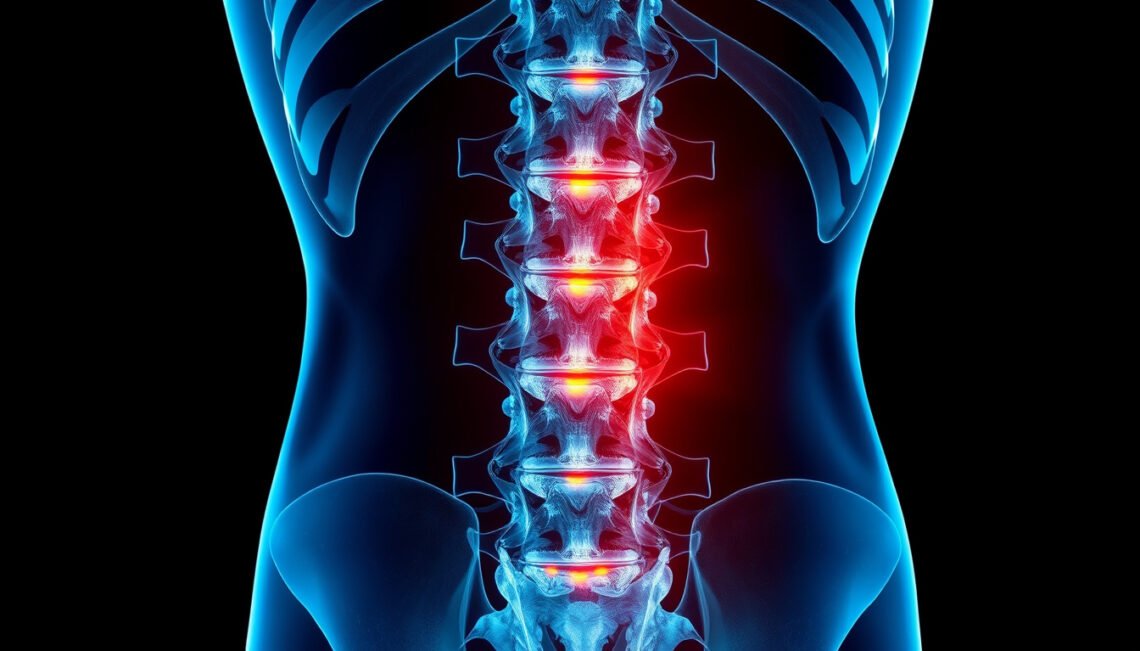Lumbar instability is a common yet often misunderstood condition affecting many adults worldwide. It refers to a situation where the spinal segments in the lower back (lumbar region) become overly mobile or unstable, leading to pain, discomfort, and sometimes nerve irritation. If you’ve been experiencing persistent lower back pain or a feeling of your back “giving way,” understanding lumbar instability can help you seek timely and effective treatment. In this comprehensive guide, we explore what lumbar instability entails, its symptoms, causes, and the most effective treatment options available today.
What is Lumbar Instability?
Lumbar instability occurs when the normal stability of the lumbar spine is compromised. The lumbar spine, made up of five vertebrae (L1 to L5), supports much of the body’s weight and allows for movement and flexibility. When the supporting structures—such as ligaments, muscles, and the discs—are weakened or damaged, the vertebrae may move excessively relative to each other, leading to pain and potential nerve compression.
This condition can develop gradually over time or result from a traumatic injury. The key aspect of lumbar instability is its tendency to cause recurrent episodes of pain and dysfunction, often worsening with activity and improving with rest.
Symptoms of Lumbar Instability
Recognizing lumbar instability early can significantly improve outcomes. Common symptoms include:
- Lower Back Pain: Often localized but can radiate to hips or thighs.
- Feeling of “Wobbly” or “Loose” Back: A sensation that the lower back is unstable or shifting.
- Pain with Movement: Particularly while bending, twisting, or lifting.
- Pain Relief with Rest: Symptoms tend to improve after periods of inactivity.
- Recurrent or Chronic Pain Episodes: Especially after physical activity or sudden movements.
- Muscle Spasms: As muscles try to compensate for instability.
- Nerve Symptoms: Such as numbness, tingling, or weakness if nerve compression occurs.
Understanding these symptoms and their pattern can aid in early diagnosis and management.
Causes of Lumbar Instability
Lumbar instability can develop from various underlying causes, including:
1. Degenerative Disc Disease
As discs age, they lose hydration and elasticity, weakening their ability to provide stability, which can lead to excessive vertebral movement (source). This degeneration often results from natural aging processes but can be accelerated by injury.
2. Ligament and Muscle Weakness
Damage or weakening of the muscles and ligaments supporting the spine reduces stabilization, increasing susceptibility to instability.
3. Spinal Injuries
Trauma such as fractures, dislocations, or ligament tears from accidents or falls can cause structural damage leading to instability.
4. Previous Spinal Surgery
Procedures that modify spinal structures, especially if complications occur or healing is incomplete, may predispose to instability.
5. Congenital Conditions
Some individuals are born with structural abnormalities in the spine that predispose them to instability.
6. Osteoporosis
Weakened bones are more prone to fractures that can destabilize the lumbar segment.
Diagnosing Lumbar Instability
Diagnosis involves clinical evaluation, imaging studies, and sometimes specialized tests:
- Physical Examination: Assessing movement, pain points, and signs of nerve involvement.
- X-rays: Flexion and extension views reveal abnormal vertebral movement.
- MRI: Provides detailed images of soft tissues, discs, and nerves.
- Bone Scans: When an infection or tumor is suspected.
A comprehensive evaluation by a spine specialist is essential for accurate diagnosis.
Effective Treatments for Lumbar Instability
The management of lumbar instability aims to relieve symptoms, restore stability, and prevent further degeneration. Treatment options include conservative approaches and surgical interventions.
Conservative Treatments
Most cases of lumbar instability respond well to non-invasive measures:
- Physical Therapy: Focused on strengthening core and back muscles, improving flexibility, and stabilizing the spine.
- Pain Management: Nonsteroidal anti-inflammatory drugs (NSAIDs), analgesics, or muscle relaxants.
- Posture and Ergonomics: Adjusting daily activities to reduce spinal stress.
- Bracing: Using lumbar supports or braces temporarily to limit movement and provide stability.
- Lifestyle Modifications: Weight management, quitting smoking, and avoiding heavy lifting.
Surgical Interventions
When conservative treatments fail or neurological symptoms worsen, surgery may be necessary:
- Spinal Fusion: The most common procedure, where two or more vertebrae are fused together using bone grafts and hardware to prevent movement and stabilize the spine.
- Decompression Surgery: To relieve nerve compression caused by unstable segments.
- Dynamic Stabilization Devices: Modern technology offers motion-preserving implants that stabilize while allowing some movement.
Prevention and Management Tips
Preventing lumbar instability involves maintaining a healthy spine through:
- Regular exercise focusing on core strength
- Proper lifting techniques
- Maintaining a healthy weight
- Avoiding prolonged sitting or poor posture
- Seeking early treatment for back injuries
List of Key Strategies to Address Lumbar Instability
- Consult with a spine specialist for accurate diagnosis
- Engage in targeted physical therapy to strengthen supporting muscles
- Adopt ergonomic practices at work and home
- Maintain a healthy weight to reduce spinal load
- Follow prescribed post-operative or conservative treatment plans diligently
Frequently Asked Questions about Lumbar Instability
Q1: Can lumbar instability be permanent?
While some cases of lumbar instability may require surgical intervention for a definitive solution, many patients experience significant relief with appropriate conservative treatment. Early diagnosis and management are crucial to prevent chronic issues.
Q2: How is lumbar instability different from other back problems?
Lumbar instability specifically refers to excessive movement between vertebrae leading to instability, whereas other conditions like herniated discs or spinal stenosis may involve nerve compression without significant vertebral movement.
Q3: Are there exercises that can help improve lumbar stability?
Yes, core-strengthening exercises like planks, bridges, and pelvic tilts can help support the lumbar spine and reduce symptoms, but it’s essential to consult a healthcare professional before starting any exercise program.
Conclusion
Understanding lumbar instability is vital for anyone experiencing persistent lower back pain, especially when accompanied by a sensation of instability or recurrent episodes after activity. With proper diagnosis, tailored treatment strategies—ranging from physical therapy and lifestyle modifications to surgical options—can effectively address the condition and restore quality of life. If you suspect lumbar instability, do not delay seeking medical attention. Early intervention can prevent progression and help you regain a strong, stable, and pain-free back. Take the first step today and consult with a spine specialist to explore your options for treatment and stabilization. Your spine deserves the best care to support a healthy and active life.






